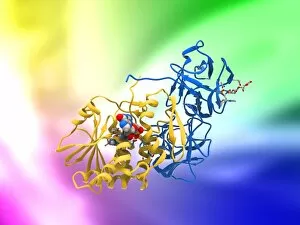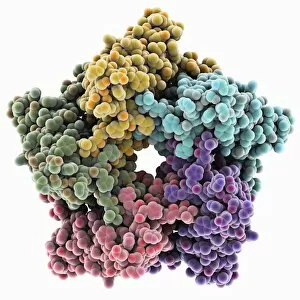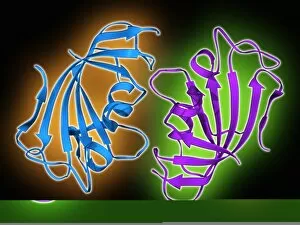Catalytic Collection
"Catalytic: Unveiling the Intricate World of Chemical Transformations" In the vast realm of chemical reactions
All Professionally Made to Order for Quick Shipping
"Catalytic: Unveiling the Intricate World of Chemical Transformations" In the vast realm of chemical reactions, catalysis stands as a powerful force that drives transformative processes. Like an oil refinery worker meticulously refining crude oil into valuable products, catalysts play a pivotal role in accelerating reactions and enabling efficient production. Scientists armed with cutting-edge technology, such as Raman laser spectroscopy C016/3827, delve deep into the molecular intricacies to understand catalytic mechanisms. Their work is akin to delicate artwork, where they unravel the secrets hidden within molecules like Ricin A-chain (artwork C017/3653) or the captivating structure of Ricin molecule (artwork C017/3652). Each brushstroke reveals new insights into how these compounds can be harnessed for beneficial purposes. The HIV reverse transcription enzyme F006/9606 and its counterparts F006/9494 demonstrate another facet of catalysis - their ability to convert RNA into DNA during viral replication. These enzymes act as catalysts in this intricate process crucial for HIV's survival. Amidst this scientific tapestry lies the hammerhead ribozyme molecule F006/9492 – a remarkable example of nature's own catalytic prowess. This tiny molecule possesses self-cleaving abilities, showcasing how even RNA can act as a catalyst. Catalysts are not just confined to laboratories; they permeate our everyday lives too. From car exhaust converters to industrial-scale reactors, these agents enable cleaner and more sustainable processes by reducing harmful emissions and conserving resources. As we uncover more about catalysis through research and innovation, we unlock endless possibilities for creating greener technologies and improving countless aspects of our modern world. The power transformations holds immense potential – it is both awe-inspiring artistry and groundbreaking science combined in perfect harmony.









































